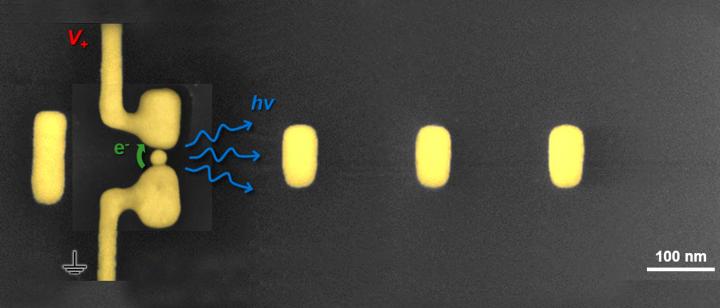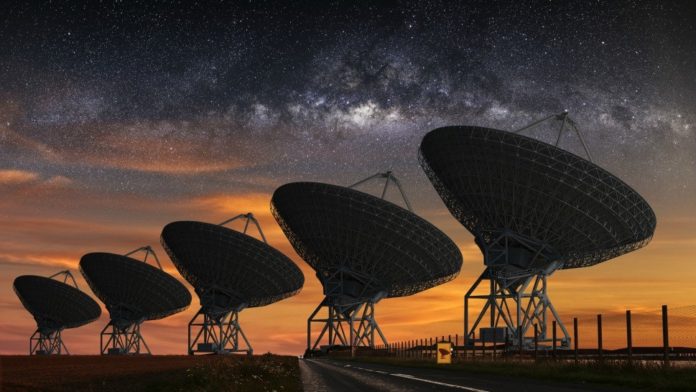Directional antennas are used in radios in order to convert electrical signals into radio waves and then emit them in a certain direction. Not only does this enable increased performance, but it also reduces interference. Over at the University of Wurzburg’s Department of Physics, the same principle has been applied to light. In order for antennas to be able to operate with such short wavelengths of visible light they first have to be shrunk to nanometer size. And this is the basis of the research published in the journal Nature Communications.
In their publication, the researchers describe the process involved in generating directed infrared light using a gold, electrically driven Yagi-Uda antenna. For anyone who’s unsure as to what a Yagi-Uda antenna looks like, Dr. Rene Kullock, a member of the nano-optics team, has an explanation: “Basically, it works in the same way as its big brothers for radio waves. In the case of a Yagi-Uda antenna, however, this does not occur evenly in all directions but through the selective superposition of the radiated waves using special elements, the so-called reflectors and directors.” The result being constructive interference in one direction and destructive interference everywhere else.

Working with antenna technology on such a small scale is very challenging. It was a while ago now that the Würzburg physicists first demonstrated the principle behind an electrically driven light antenna. But some new ideas were needed in order to make the Yagi-Uda antenna a success. Much of that was down to a complex production technique in which gold was bombarded with gallium ions which then allowed the researchers to cut out the exact shape of the antenna along with all the necessary reflectors, directors, and connecting wires with high precision. Then, they carefully placed a gold nanoparticle into the element so that one wire touched the active element while the other wire was just a nanometer away.
“This gap is so narrow that electrons can cross it when voltage is applied using a process known as “quantum tunneling”,” explained Kullock. Because of the way in which the reflectors and directors are arranged this kind of charge motion generates optical frequency vibrations within the antenna which are emitted in a specific direction.
To have an antenna that is able to generate light in a particular direction is quite a novelty, however small as in radio wave antennas the light emissions directional accuracy is dependent on the number of antenna elements. Effectively, “this has allowed us to build the world’s smallest electrically powered light source to date which is capable of emitting light in a specific direction,” said Professor Bert Hecht, Chair of Experimental Physics 5 at the University of Würzburg.
But much more research is needed before the invention is ready to be used commercially. Not only does more work need to be done on the counterpart that receives the light signals, but the stability and efficiency of the antenna need improving also.

